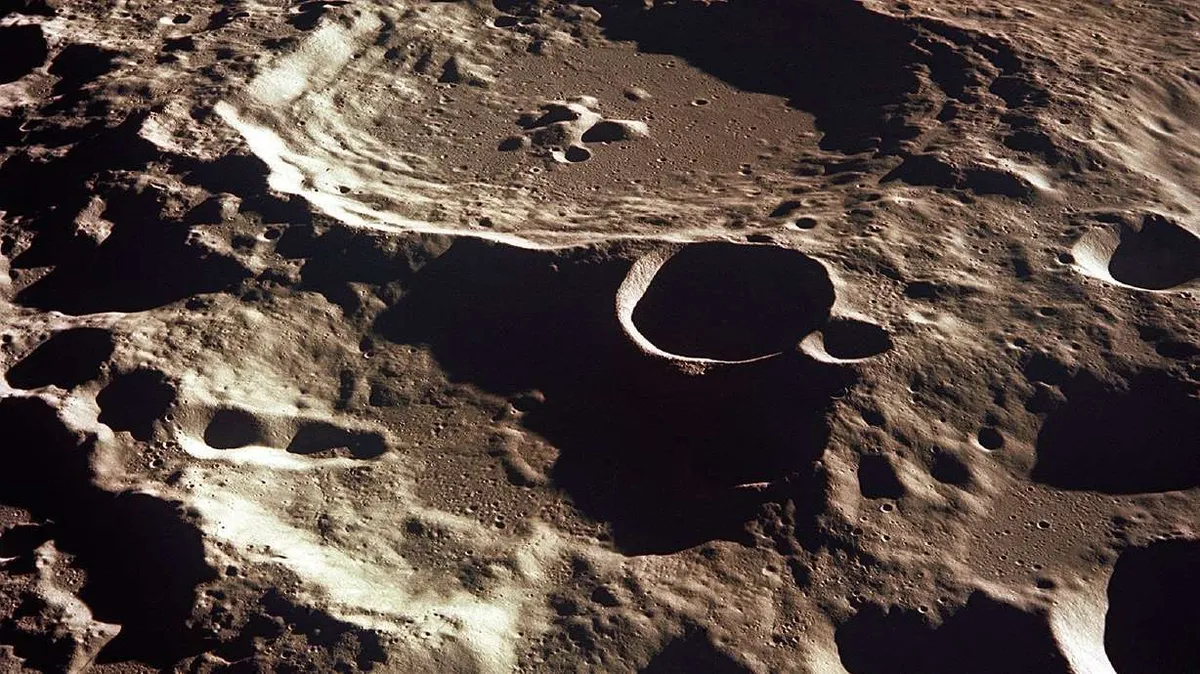
HOUSTON — The asteroid known as 2024 YR4 may be out of sight, but it remains a significant focus for scientists worldwide. Initially, this building-sized celestial object appeared to be on a potential collision course with Earth. Currently, it is zooming beyond the reach of telescopes as it orbits the sun. While researchers wait for it to reappear, its revised trajectory is now directing attention toward another possible target: the moon.
Discovered at the end of 2024, 2024 YR4 was first thought to pose a risk of impacting Earth by December 22, 2032. With every new observation, the chance of that impact fluctuated, peaking at 3.1% in February, which made it the riskiest asteroid ever documented. Ground- and space-based telescope observations have been crucial in helping astronomers refine their understanding of 2024 YR4's size and orbital path. With these more precise measurements, researchers were ultimately able to rule out a direct impact with Earth.
Recent observations of 2024 YR4 in early June have significantly improved astronomers' knowledge about its future trajectory, enhancing predictions about where it will be in seven years by nearly 20%, according to NASA. This data indicates that even though Earth is safe from a direct hit, YR4 could still pose a threat to the moon by late 2032. An impact on the lunar surface would be a once-in-a-lifetime event for humanity to witness; however, it could also send fine-grained lunar material hurtling toward Earth.
While the Earth would not face any significant physical danger from an asteroid strike on the moon, astronauts and infrastructure on the lunar surface at that time could be at risk. Additionally, satellites orbiting Earth that are essential for navigation and communication could also be affected. Any missions in low-Earth orbit might find themselves in the debris pathway, although the International Space Station is scheduled to be deorbited before any potential impact.
Initially, 2024 YR4 was viewed as a case study emphasizing the importance of planetary defense — the field dedicated to discovering and tracking asteroids that could collide with Earth. However, astronomers now suggest that this asteroid could redefine the risks that the field monitors, expanding the focus to include potential impacts on the moon. Dr. Paul Wiegert, a professor of astronomy and physics at Western University in London, Ontario, stated, "We now have things worth protecting that are a bit further away from Earth, so our vision is hopefully expanding a little bit to encompass that."
The threatening hunk of rock, appearing as a mere speck of light through even the most advanced astronomical tools, is estimated to be about 200 feet in diameter, based on observations made by the James Webb Space Telescope. Julien de Wit, an associate professor of planetary sciences at MIT, explained, "Knowing YR4's size helped us understand how big of an explosion it could be." Astronomers believe they have identified most near-Earth asteroids that could be classified as "planet killers," which are typically larger than 0.6 miles in diameter. Smaller asteroids like 2024 YR4, dubbed a "city killer," could cause significant regional devastation if they were to collide with Earth.
As astronomers continue to monitor 2024 YR4, recent calculations suggest that its impact is most likely to occur on the near side of the moon — the side visible from Earth. The collision could create a bright flash visible to the naked eye for several seconds and result in an impact crater estimated to be 0.6 miles wide, similar in size to Meteor Crater in Arizona. This would mark the largest impact on the moon in 5,000 years and could unleash up to 220 million pounds of lunar rocks and dust.
The debris from such an impact could be hazardous to any astronauts present on the moon or the structures they have built for research and habitation. The moon's lack of atmosphere means that any debris could be dispersed widely across its surface. According to NASA, the average distance from the moon to Earth is approximately 238,855 miles. Particles as small as large sand grains could reach Earth between a few days and a few months post-impact, resulting in an eye-catching meteor shower.
Despite the potential for a dramatic lunar impact, experts assure that there is no immediate danger to anyone on Earth. Dr. Wiegert emphasized, "We're not expecting large boulders or anything larger than maybe a sugar cube, and our atmosphere will protect us very nicely from that." However, he noted that these particles, traveling faster than a speeding bullet, could pose a risk to satellites, highlighting the importance of ongoing monitoring and research in the field of planetary defense.